Backup to Any Storage
PREMIUM FEATURE¶
Backup is different from bidirectional sync. When you want to preserve your files and previous versions of files from data loss, you can use the Backup feature.
SET UP YOUR BACKUP JOB¶
The instructions below describe how you choose a local folder on your computer to backup to a folder on any of your linked storage sources.
- Choose which folder on your computer you want to backup. You have two convenient choices for starting the process.
Option 1: Selecting your folder through the odrive tray menu¶
Go to the tray menu and hover over the Backup to odrive listing. You'll see the Add new backup menu option.
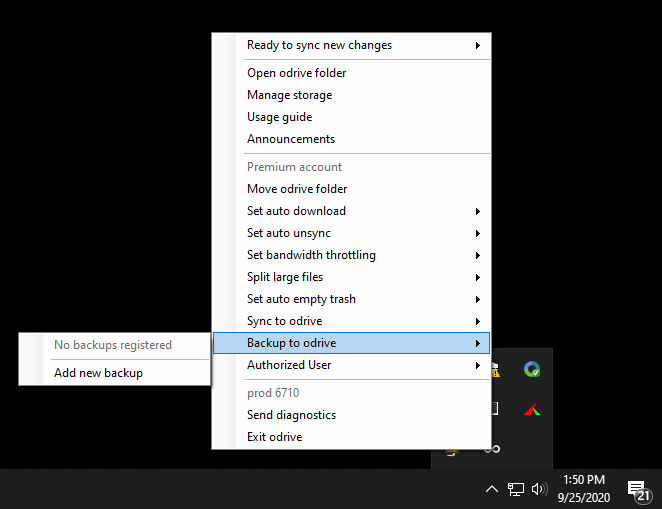
Next, a folder selector popup will appear. You'll want to browse to the folder on your computer that you'd like to back up.
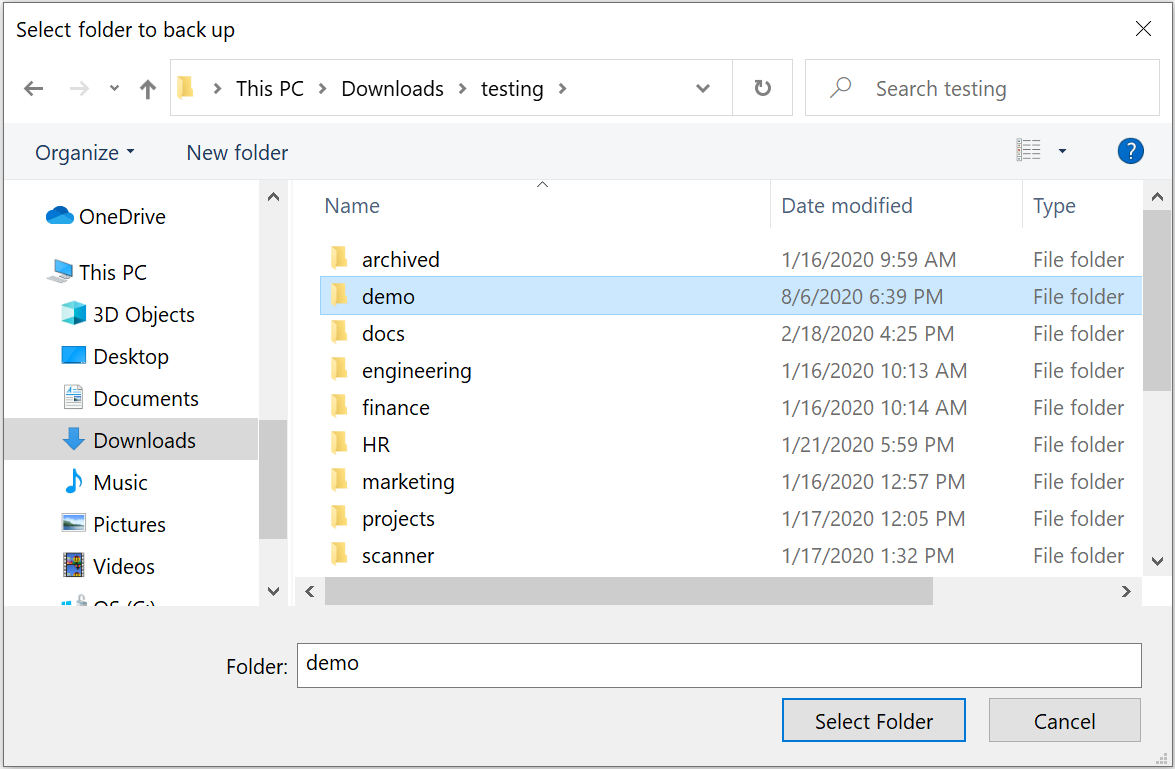
Option 2: Using the right-click menu to select your folder¶
In Windows Explorer or Mac Finder, you can navigate directly to the folder on your computer that you want to back up. Right-click on it and select the Backup to odrive option.
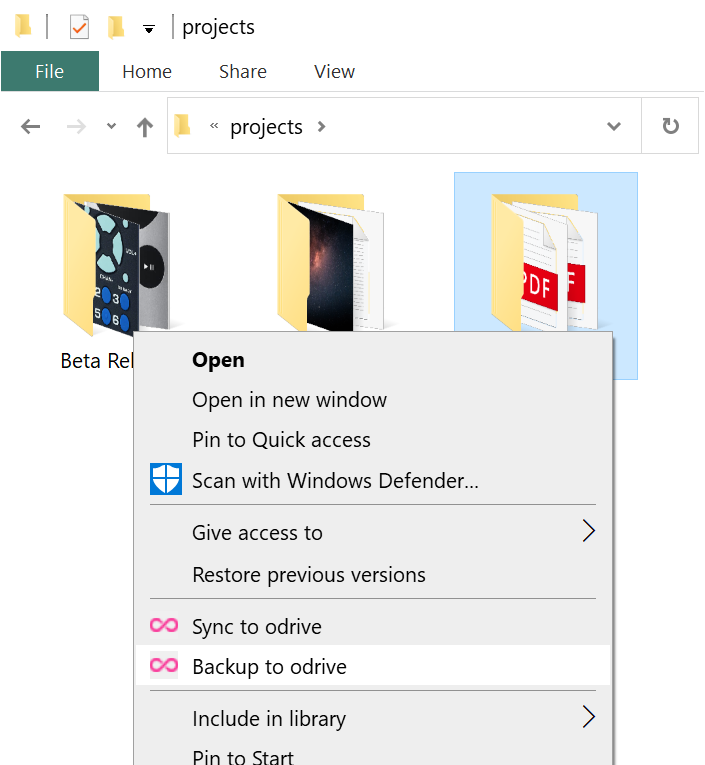
Why don't I see the "Backup to odrive" option in my Odrive sync folders?
You cannot set up backup on a sync folder within Odrive. The Backup feature is designed to back up folders on your computer (outside of the odrive folder or any sync folder created through odrive) to any remote storage.
Attempting to back up a folder directly from an integration in Odrive is complex (e.g. what happens with .cloud placeholder files and folders?) and is currently disallowed.
If you are trying to solve a complex storage use case or workflow issue for your business, please contact sales@odrive.com to see if there are other options or software products which may be able to help.
📘 How do I get the Backup to odrive option to show up for my NAS in Windows Explorer?
The right-click menus do not show up if you access your storage device using a UNC path such as: \\NAS\MyShare.
You can always use the Map Network Drive option in Windows, however, to set up backup to odrive against a NAS or file server location. Open Windows Explorer and navigate to This PC on your left Windows Explorer navigation pane. In the top menu bar, go to Computer and select Map Network Drive to map the UNC path location to a specific drive letter. Once you do so, you will be able to browse into the mapped network drive, select a specific folder, and then right-click on it. You should see the odrive context menu options now, including the Backup to odrive option.
NOTE: Do not use the "Add network location" option. This will just create a shortcut to the UNC path you specify, but odrive will not be able to use the network location shortcut properly as a valid source path.
- Now that you've chosen a folder to back up, you'll see a confirmation dialog. On this window, you'll click on the Select backup destination button which will launch a web browser dialog for you to pick the folder on remote storage to hold your backup.
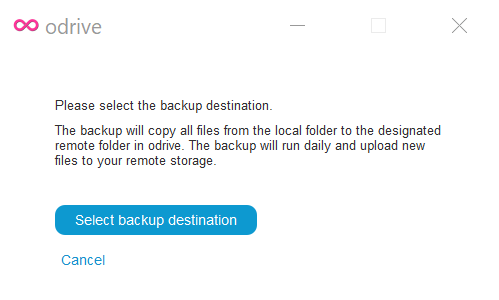
- When the web browser comes up, you will be able to pick a destination folder.
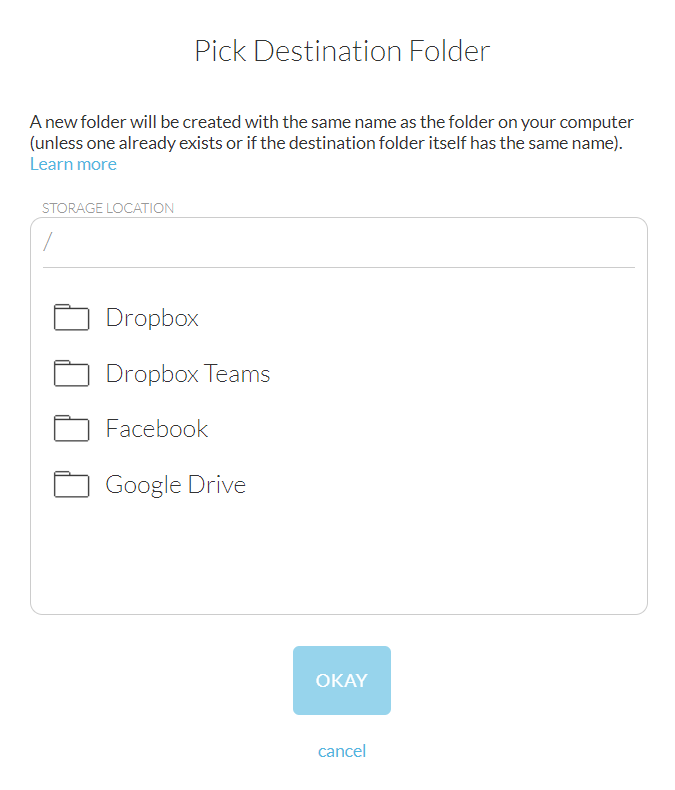
Important Note
When you select a destination folder, the rules below are applied.
Rules¶
-
If the destination folder you select matches the name of the folder you want to backup, then backup will try to use this folder directly to store your backup files.
-
If the backup destination folder does not match the source name, then we check to see if the destination has a matching subfolder. If it does not, then we create a new matching subfolder and use it.
-
If the backup destination folder already has a subfolder that matches the name of your source folder, then the subfolder will be used.
Click here to see examples of how these rules are applied.
Don't Worry¶
The confirmation window in Step 4 will display what the final source and destination folders to use will be, so you will be able to play with the configuration until you're sure it is correct before continuing.
- Once you've picked a destination folder, a confirmation window will appear which will give you a chance to double-check the paths that will be used.
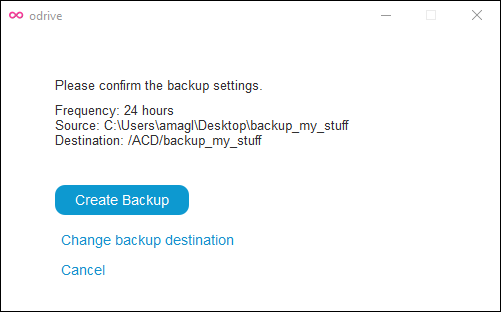
If the remote folder selected already has data in it, you will be presented with a message indicating this.

Important Note
odrive backup will not reupload files if the current version already exists in the backup destination folder. Any new files which do not exist will get folded into the destination as expected. Any new versions of existing files will also get uploaded as well.
- As soon as you click the Create Backup button on the confirmation window, your backup job will be set up. The first backup run is kicked off immediately.
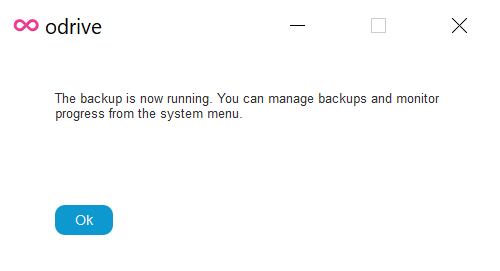
- You can monitor the progress of the backup job through the odrive tray menu.
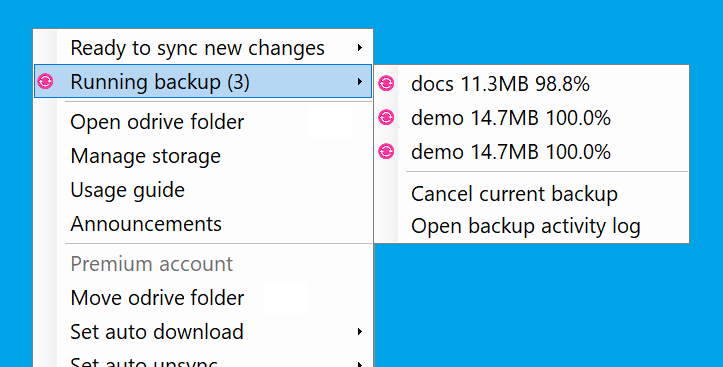
Congratulations, you've finished setting up your backup job!
Configuring backup to multiple remote storage locations
You can configure more than one backup job for a local folder. This will allow you to back up any folder on your computer to two (or more) different storage locations! If you are dealing with mission critical data that you cannot afford to lose, then you may want to consider taking advantage of this capability.
RECOVERING A FILE FROM BACKUP¶
In the event you need to recover a file, you can simply go to your Backup Destination Folder through the odrive sync client if you have the storage account linked. You can also just use the storage source's web client or some other access tool.
Automatic File Versioning¶
In the Backup Destination Folder, you'll find your files and folders. The first time a file is backed up, it will have the same name in the Backup Destination Folder as it does in the source folder, e.g. Hello.txt.
Let's say you save additional updates to the file. When the next backup job runs, it will recognize that this is a new file version and make sure it is retained. All future file versions are saved with a date stamp suffix according to the modified date timestamp of the file on your computer. So if you make a change to Hello.txt on August 26, 2020 at 12:45:34pm, then the next time your backup job runs, you should see in the Backup Destination Folder both the original version Hello.txt and also the newer Hello-20200826124534.txt version.
Use the access tool you're using to download the file version you want from your remote storage.